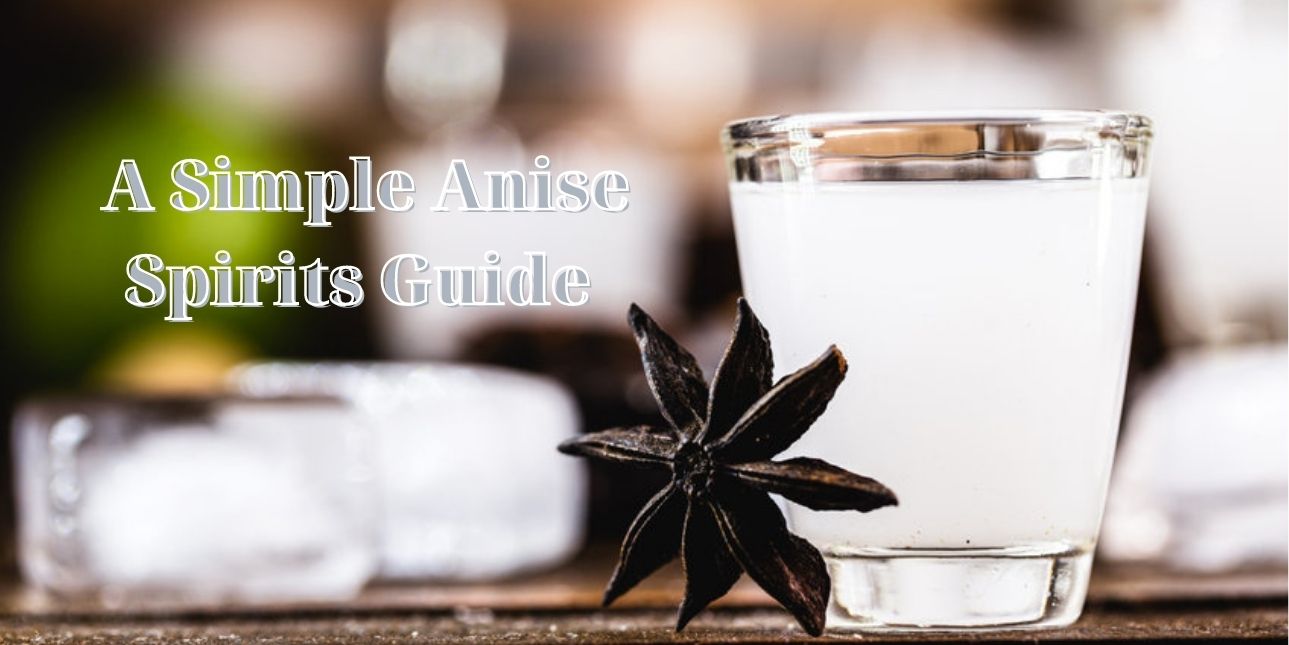
Anise spirits have been an integral part of Mediterranean, European, and Middle-eastern brewing traditions. These spirits are slowly garnering popularity across the world for their distinctive taste profiles and their use as aperitifs and digestifs. Brewed by distilling the extract of the anise plant followed by a flavoring with spices like fennel & star anise, anise liqueurs bring together several aromatic elements in the spirit. Anise-flavored liqueurs, on the other hand, are flavored with anise and other botanicals or spices by using a distilled spirit as a base.
There’s more to anise spirits and anise-flavored liqueurs than just absinthe, and the variety is marked with distinct cultural elements from these spirits’ countries of origin. Distinguished by the amount of sugar and alcohol in the spirit, anise-flavored drinks come in plenty of options - ideal for establishments that are looking to branch out to newer spirits for their menu. Read on as we discuss the most distinguished anise spirits in detail.
Popular Anise Flavored Liqueurs
Here’s a list of anise spirits that can make perfect additions to your bar menu:
- Sambuca
Though absinthe remains one of the most popular anise spirits, Sambuca is a popular Italian favorite that has become extremely popular over the years. So, what is sambuca? The drink is an anise-flavored spirit that is sweetened and uses a wheat-derived distillate as its base spirit. The liqueur is often flavored with star anise and is a mainstay in Italian restaurants. Sambuca is best served as a shot with either espresso or three whole coffee beans at the bottom of the shot glass, in case you’d like to stick to the traditional methods of serving the drink.
- Ouzo
This Greek spirit is a local hit that brings together several spices and flavors. Ouzo is made by distilling grape extract and is a clear spirit. The distilled alcohol is then flavored with an array of aromatic spices like anise, cinnamon, clove, coriander, and star anise. Ouzo is endowed with a rich licorice taste that makes it a great drink to serve as an aperitif or a digestif tonic. Though clear, the spirit turns cloudy or white when mixed with water or ice. This occurs due to spontaneous emulsification when water comes in contact with anise and other spice-derived oils present in the ouzo.
- Absinthe
Absinthe is the most popular anise spirit and has remained quite popular throughout the ages. Though it gained notoriety for purportedly causing hallucinations in the late 19th and early 20th centuries, such claims have since been debunked, and absinthe bans are mostly a thing of the past. The drink finds its origins in Switzerland and is made of anise, fennel, and wormwood distillates. The process involves redistilling neutral or base alcohol with the botanicals - a reason for the green tint in the drink. Thujone - the compound once thought to be responsible for the drink’s psychoactive effects - is now strictly regulated and only small quantities of the compound are allowed in the final product. Absinthe can also be used to make several cocktails that can help you create unique offerings for your customers. Be sure to use high-quality cocktail shakers when preparing absinthe cocktails at your establishment.
- Pastis
This French spirit was developed as an alternative to absinthe following its ban in the early 20th century. The drink is made by distilling neutral alcohol with several aromatic botanicals and herbs such as licorice, star anise, and fennel. This process is followed by the addition of sugar. Pastis differs from absinthe in the fact that there’s no wormwood involved in the distillation process of this anise liqueur. The drink is served with ice, and like ouzo, shows the Louche effect, where the liquor turns white when mixed with water. Pastis is mellow, smooth, and extremely palatable. It is also considered one of the smoothest anise spirits and is extremely popular in Europe.
- Tsipouro
Another Greek contribution to the list of anise spirits, tsipouro is produced by fermenting and distilling the remnants of wine production, also called pomace. The distillation is traditionally carried out using copper distillation stills and the end product is flavored using anise and other botanicals. Sugar is also added in some varieties of the anise spirit but is not a mainstay in most brewing techniques. The drink is one of the most casual spirits in Greece and is often served with ice. If you intend on serving tsipouro to your customers the traditional way, make sure you have high-grade ice maker machines for all your ice requirements behind the bar.
- Arak
This anise spirit dates back to the 1100s AD and is considered one of the first in its niche. The drink finds its origins in the Levant region of the Middle East and remains a local favorite to this day. Arak relies on grape distillate for its base liquor and is flavored with aniseed extract. It also contains one of the highest alcohol contents by volume among all anise-flavored liqueurs and is often diluted using water before consumption. It bears a strong licorice flavor and is best served with ice to mellow the aromaticity of the drink.
- Raki
This Turkish anise spirit is one of the popular drinks in the country and is a common favorite for several occasions. Raki is made from grapes and raisins that have been distilled twice and have been flavored with pungent aniseed extract. Some of the high-end variants are aged in French oak barrels that give the anise-flavored drink a woody taste profile and a rich yellowish hue. Raki is fairly high in its alcohol content, however, it is also smooth when served with ice or diluted with water. Be sure to equip your bar with dependable commercial ice makers when serving Raki at your establishment so you can offer your customers a truly exotic and delightful experience.
- Chinchon
A Spanish anise-flavored liqueur dating back to the 1600s AD, Chinchon is a popular botanical spirit in and around Madrid. The drink is prepared by macerating the anise seeds and suspending them in wine. The resulting mixture is then distilled in copper stills. Matalahuga anise native to Spain is used in Chinchon’s production and imparts a strong aromatic flavor to the drink. Chinchon comes in three main varieties - dry, special dry, and sweet.
- Aguardiente
One of the most popular alcoholic beverages of Colombia, Aguardiente is South America’s contribution to the list of anise spirits and liqueurs. The drink combines distilled spirits derived from sugarcane extract, aniseed, and sugar in some recipes. However, Aguardientes are of several varieties and the base spirit can also come from fruit distillates. This gives each type of anise spirit a different flavor and texture. The alcoholic content is often above 45% and is best served chilled with a large block of ice or after dilution with water.
Anise spirits and liqueurs are up-and-coming niches of high ABV spirits. As these drinks gain more popularity, their demand is only bound to increase. You can offer a variety of anise spirit cocktails to make your offerings more interesting and palatable to customers that are trying these varieties of alcohol for the first time. Cocktails such as licorice mist, green beast, and the roaring greek tiger can be great ways to market anise spirits and liqueurs at your establishment.











